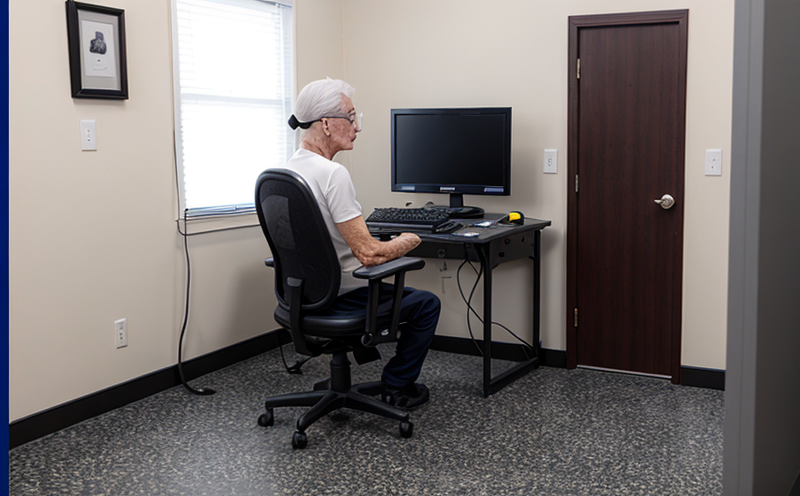Accelerated weathering test of outdoor performance textiles
The accelerated weathering test is a critical process used to simulate the effects of natural exposure on outdoor performance textiles. This testing method accelerates the aging and degradation processes that occur naturally over time, allowing manufacturers and quality assurance teams to evaluate textile durability under controlled conditions. The primary goal is to predict the expected lifespan of textiles in real-world environments, ensuring products meet both aesthetic and functional requirements.
The test involves exposing textiles to various environmental factors such as ultraviolet (UV) light, heat, humidity, and water. These elements mimic the natural aging process that occurs when a textile is exposed outdoors over time. By simulating these conditions in a controlled laboratory setting, manufacturers can identify potential weaknesses early on, enabling them to address issues before products reach the market.
The accelerated weathering test utilizes specialized equipment such as xenon-arc lamps and humidity chambers. These devices provide precise control over exposure parameters like light intensity, temperature, and relative humidity. The test subjects are typically textiles used in outdoor applications, including clothing, awnings, umbrellas, and outdoor furniture fabrics.
The testing process involves several steps: specimen preparation, initial inspection, exposure to the weathering apparatus, periodic monitoring, and final evaluation. Specimens must be carefully prepared according to industry standards, ensuring that they accurately represent the intended end use. Initial inspections ensure that all specimens are in good condition before beginning the test.
During the exposure phase, textiles are subjected to controlled conditions designed to simulate real-world environmental stresses. This includes UV radiation, heat, and humidity levels that would be encountered outdoors over time. The duration of each cycle depends on the specific requirements of the textile being tested but typically ranges from several days to weeks.
Periodic monitoring throughout the test allows for early detection of any signs of degradation or failure. These observations help ensure accurate data collection and interpretation, providing valuable insights into how different factors impact textile performance over time. After completing all cycles, a final evaluation is conducted to determine whether the textiles meet specified quality standards.
Results from accelerated weathering tests play an essential role in product development by identifying areas where improvements are needed. They also assist companies in meeting regulatory requirements related to durability and longevity claims made about their products.
| Standard | Description |
|---|---|
| ASTM D5297-18 | Standard Practice for Accelerated Weathering of Fabrics Using Xenon Arc Light. |
| ISO 105-B02 | Photostability of Textile Products - Determination by Exposure to Artificial Light, Part B: Photodegradation in the Visible Region (Xenon-arc lamp). |
| EN ISO 17863-2 | Textiles - Deterioration of Outdoor Textile Fabrics due to Exposure to Weathering Factors - Part 2: Xenon Arc Lamp Apparatus. |
Why It Matters
The accelerated weathering test is crucial for ensuring that outdoor performance textiles maintain their quality and functionality over time. By simulating the effects of natural environmental factors, this testing method helps manufacturers identify potential issues early in the development process, allowing them to make necessary adjustments before products reach consumers.
Outdoor performance textiles are designed to withstand harsh conditions, including extreme temperatures, heavy rain, strong winds, and intense sunlight. These elements can cause significant damage if not properly addressed during production. The accelerated weathering test provides a way to assess how well these textiles perform under realistic conditions without requiring extensive field testing.
Accurate data from accelerated weathering tests is essential for meeting regulatory requirements related to durability and longevity claims made about outdoor performance textiles. Many countries have strict regulations governing the labeling of products regarding their expected lifespan. Meeting these standards ensures that consumers receive accurate information when purchasing products, fostering trust and confidence in brand reputation.
In addition to compliance with regulations, conducting accelerated weathering tests allows companies to improve product quality by identifying areas where current designs could be enhanced or modified. For instance, if certain types of textiles show signs of premature aging under specific conditions, manufacturers may explore new materials or design changes aimed at extending their useful life.
The results from these tests also contribute valuable feedback for research and development teams working on next-generation products. By understanding how different factors affect textile performance, researchers can develop innovative solutions that offer better protection against environmental stresses while maintaining aesthetic appeal.
Applied Standards
| Standard | Description |
|---|---|
| ASTM D5297-18 | Standard Practice for Accelerated Weathering of Fabrics Using Xenon Arc Light. |
| ISO 105-B02 | Photostability of Textile Products - Determination by Exposure to Artificial Light, Part B: Photodegradation in the Visible Region (Xenon-arc lamp). |
| EN ISO 17863-2 | Textiles - Deterioration of Outdoor Textile Fabrics due to Exposure to Weathering Factors - Part 2: Xenon Arc Lamp Apparatus. |
Benefits
- Identifies potential issues early in the development process.
- Saves time and resources by eliminating the need for extensive field testing.
- Provides accurate data that helps meet regulatory requirements related to durability and longevity claims made about products.
- Improves product quality through continuous improvement initiatives based on test results.





